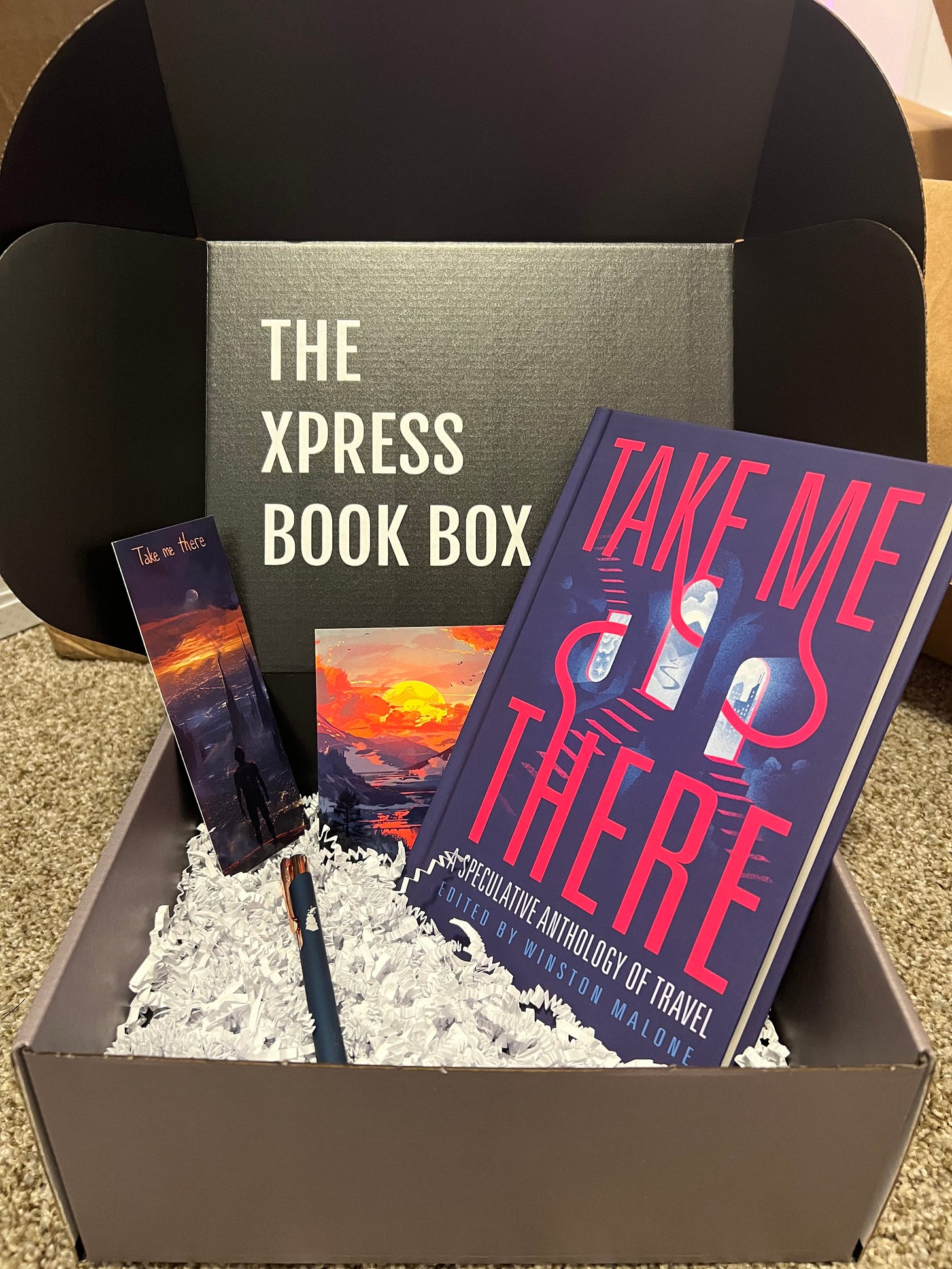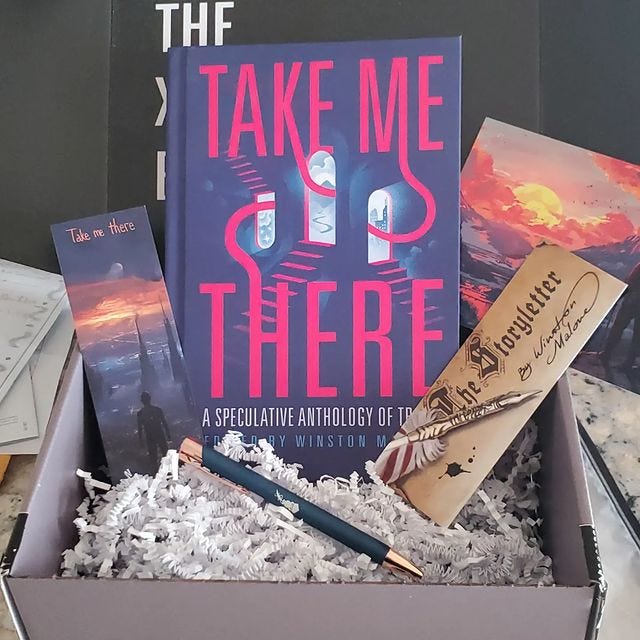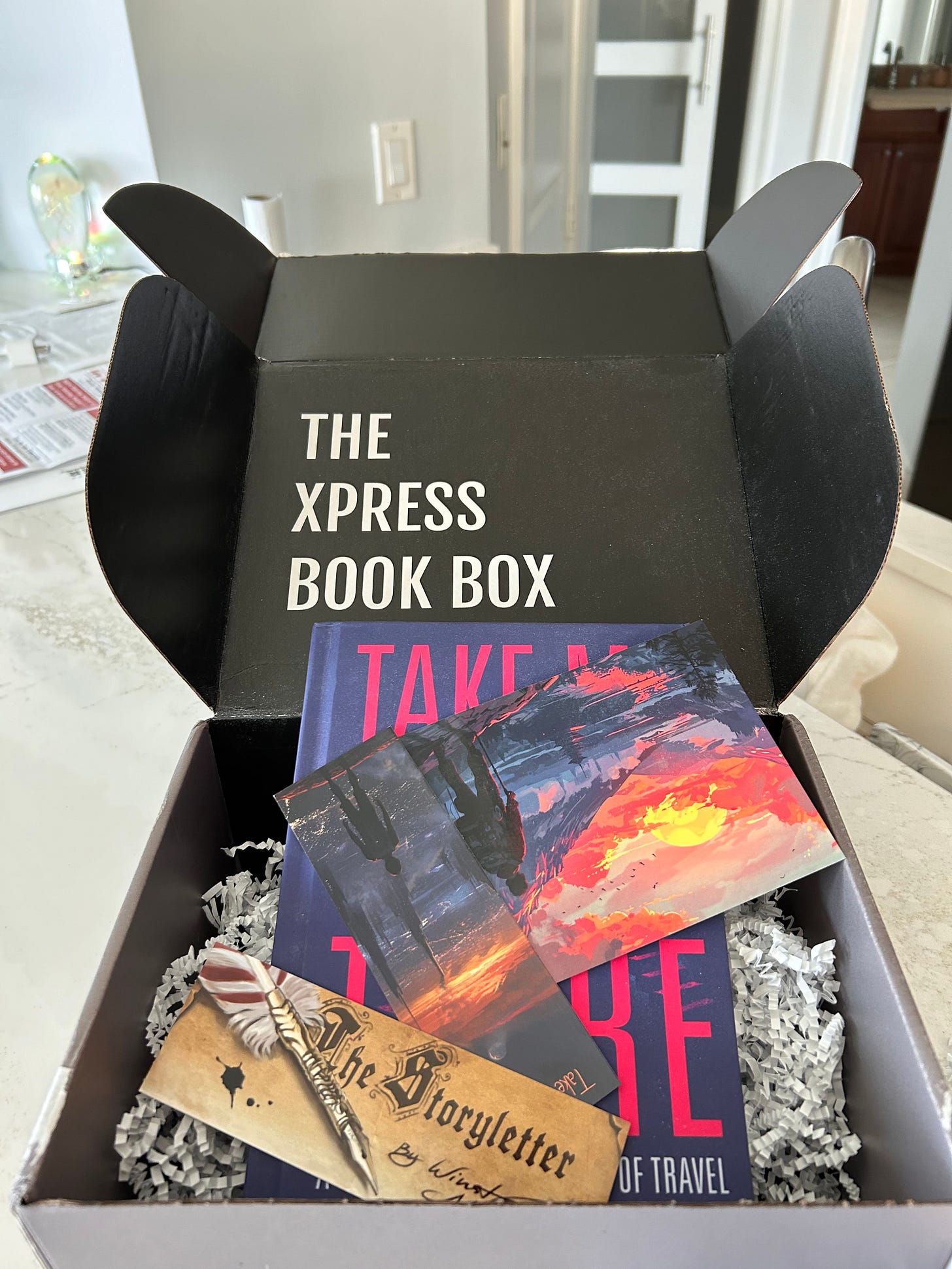Here's how I used Substack to publish an anthology and ship it to subscribers in a book box
The final result? Absolutely worth it.
Warmest of welcomes to you! Whether you’re a new or faithful reader receiving this, your support for the indie mission here has been the wind in my sails. It’s an amazing and humbling experience to take part in this new wave of independent writing and publishing. It’s been my goal from the beginning to help writers get published, and on July 17th, 2024, it became a physical reality.
In this post, I explain my steps to publishing an anthology featuring 24 authors—some of whom you may know and follow on Substack—in print and digital formats on almost every major platform. I’ll also cover the costs and results of the endeavor near the end. Feel free to ask me any questions you have in the comments.
The Origins of the Book
The idea for an anthology began as a contest a few years back. Well, a contest and then a series of writing prompts. The prompts ended up having a similar theme running through them. Because soliciting fiction can be difficult without built-up credibility, I figured the best way to get enough stories for a complete book would be to take that theme and create an open call.
Deciding on a theme for the anthology was key. Without a similar thread tying the stories together, it’s generally harder to attract writers and readers. I'm not saying it can’t be done, but establishing a question (a hook) is one of the first steps in constructing a compelling story (in this case, a collection of stories). A hypothetical question presented by a particular theme is, “What happens when a group of authors write about X?”
Take Me There is a book about travel. It’s a broad subject matter, almost limitless in possibilities, which worked in my favor as a new publisher seeking stories. That’s not all. It was a book of travel-themed, speculative fiction; this additional leeway allowed for varied genres and styles. It took me nearly two years to acquire enough stories, most coming in the latter months of the open call here on Substack (which I had to extend).
It wasn’t until I had a solid theme that the ball got rolling.
The Selection Process
After promoting the anthology on Substack and social media, I closed with 35 submissions. Choosing the stories was probably the most difficult part. Not only was it tough to send rejection letters, but many submissions were of great quality yet didn’t fit the theme of the book as well as others. It also came down to personal taste. In the end, I offered the declined writers the option of feedback and, in some cases, published their stories on Substack.
The number of selected stories may seem arbitrary, but I sought a high volume precisely because the word count limit was 6,000, and submissions—in my experience at the time—were coming in far below that, between 2,000 and 4,000. Therefore, I made rough calculations on what I needed to print a decent-sized hardcover book while staying within a reasonable budget (subjective, I know).
Next time, I’ll select fewer stories with higher word counts. This will hasten nearly every aspect of the process because handling more than twenty stories and authors was a lot. Thankfully, everyone involved in this project was wonderful to work with, and it went smoother than expected.
So here’s how we did it.
The XPress Timeline
With such a high number of submissions, the organization to handle them all was essential. I created a spreadsheet for crucial information I’d need quick access to. I had a rough timeline of 6 months for publication. To achieve that, I established several major phases for preparing the book: Initiation, Edits, Revision, Proofreading, and Final.
There’s no hard rule of sticking with one phase, shortening a phase, or bouncing between phases until completion. Publishers should navigate the phases using the most efficient method that works for them. The following information was simply my first implementation of it. I’m open to feedback if you have a more streamlined process. Iteration is key!
Proposed 6-Month XPress Timeline and Phases
Initiation—Month 1: During the first week after closing submissions, you want to reach out to the authors who made the final cut and make sure they respond to you. If they never respond, then they are ultimately cut from the book. It’s vital to establish which stories are legitimate during this phase.
Edits—Months 1-2: Once you hear back from the author, you can edit their story. Send your suggested edits back immediately to allow the most time to implement them.
Revision—Months 3-4: After you provide the authors their edits, depending on the amount, they will need a cushion period for implementing your suggestions. Most indie authors have full-time jobs, so if they are rewriting entire sections of their story, they will need extra time. You will then be required to edit the rewritten portions, which may go back and forth for several iterations.
Proofreading—Month 5: The revision phase may extend into month five, but at this point, most of the stories should be nearing their final draft. Once all of the edits have been acknowledged, the proofreading phase begins. Let the author know that proofreading has begun so that there are no additional changes to the manuscript on either side.
Final—Month 6: The final phase is important because you want the authors to know that everything is set and agreed upon for publication. This means agreeing to all of the comments, suggestions, and edits. By doing this, you are both in agreement with the version of the story being published and the final word count for payment purposes.
(I work full-time myself. This timeline was just as much for me as it was for the authors. Life happens. It’s better to have more time than not enough.)
Editing the Book
Editors can be expensive, but they are necessary to create a professional-looking book. However, I decided to edit the book myself since I was purchasing the stories and knew that would be an additional expense. I used Grammarly Premium to assist me, and it was worth the money to laser in on specific types of edits. The authors and I collaborated using Google Docs, utilizing the “suggestion” and “comment” features to identify our changes.
I’ll write a separate post detailing my experience editing the anthology. Every author is different, and I learned to approach each story with respect to the author’s ultimate vision. With multi-author anthologies, in particular, it’s dangerously compelling to edit all of the stories as if you’re editing your own work, which can crowd out the author’s voice entirely. I wanted to ensure that didn’t happen with Take Me There, opting to focus on structural and line edits where needed and allowing the authors to challenge my edits at every step.
The formatting program I used was Atticus. It’s a very useful tool for quickly making sweeping changes to the fonts and margins. You can then export it into Print PDF or digital EPUB formats. If you’re interested in learning more about the formatting process, I wrote about it here. I used IngramSpark to publish the book, but there will be a forthcoming post regarding that fulfillment service.
The XPress Book Box
The author's experience was a priority for me. It might be their first time holding a physical copy of their work, so what better way than to send them a copy of their work as a gift?
Some of you may know that I’m not shy of experimentation. The market is shifting. So I figured why not test the market and adjust on the fly? That’s why I went all-in on the book box concept. It seemed like such a fun way to deliver new releases to authors and paying subscribers. And it was!
Was it expensive? Yes. Did I question my life decisions while doing it? Also, yes. However, I believed in the objective and decided it needed to happen regardless of cost. I wanted to see if I could do it. It became an interesting challenge, one I overcame with the help of advice from
and .I used VistaPrint to design everything in the box, including the box itself. And I ordered the following items:
9.5" x 7.75" x 4" Mailer Boxes (Hardcover books are typically 6x9)
Pens
4.2" x 5.5" Post Cards
1 Box of Crinkle Paper (for packing the boxes)
Bookmarks
Self-Adhesive Packing Tape
For shipping purposes, I went with the Rollo scale and label printer. To buy the shipping labels online at home, I used Pirate Ship. This made it a breeze to deliver them to the local post office or UPS store. There are other at-home shipping label providers, so go with whichever one offers the cheapest discounts.
If you have any questions about making your own book box, please contact me directly at storyletter@protonmail.com, and I’ll try to answer them.
The Costs
I debated whether or not to add this section because, for me, it’s not about the money. Maybe that’s a poor business strategy, but this was a passion project, and the contributing authors’ experience was my priority, as was producing a final product that we could be proud of. Still, there’s value in sharing the numbers and being transparent.
Here’s the breakdown of the direct costs to publish this anthology:
3 ISBNs (Hardcover, eBook, Paperback) - $90 ~
Professional Cover - $792.24
Grammarly Premium - $144/year
Author Payouts - $588.72
Book Box Supplies - $1,284.69
Shipping for Authors’ Complimentary Book Box - $233.81 ~
Shipping for Paid Subscribers’ Book Box - $185 ~
Reedsy Discovery - $50
IngramSpark iPage Listing - $150
100 Hardcovers from IngramSpark - $1,148.93
Total: $4,667.39
—
Minus funds from paid subscribers on Substack - $1170
Minus an unexpected generous donation from family - $500
Final Cost - $2,997.39
Also, I’d like to acknowledge the generosity of 4 contributing authors who gifted their stories without expectation of payment:
This act of kindness was worth $163.27. Therefore, I’ve paid forward your donation to Reading Is Fundamental, the leading U.S. nonprofit for children’s literacy. Based on the nonprofit’s estimate, this will help roughly 41 children access books! So, again, thank you for your wonderful donation.
The Result? It Was All Worth It
The Future of SXP
Year 1 of this anthology was a massive success, and I look forward to doing it again. I’m taking a break for the next few months (mostly due to an upcoming house move to a new state, and yes, I’m moving again!). But expect to see an open call for a brand new anthology in October. I’ll announce the theme and the details in that post.
The next 74 subscribers who upgrade to an annual plan will receive the book boxes for this year and next year—basically, it's a two-for-one deal. Annual plan members will receive everything mentioned in the box (shown above), plus the signed/numbered edition of Take Me There. Monthly subscribers will receive our ebooks in their Welcome email.
So, it’s not too late to get your own XPress Book Box. Plus, until September 30, 2024, I’m offering a 25% discount on annual plans. Get ‘em while they're hot and simultaneously support independent writing and publishing!
















This was really valuable, as I am pitching an anthology companion to an RPG. Hard numbers will be a big help.
By the way, the book box is completely destroyed, because it was dropped on my porch during a hurricane and got soaked, but the shredded paper inside provided extra moisture protection, and the book itself was fine. So, good call there!
Thank you for sharing this process! I joined Substack after your project was well underway, but I've found it fascinating!